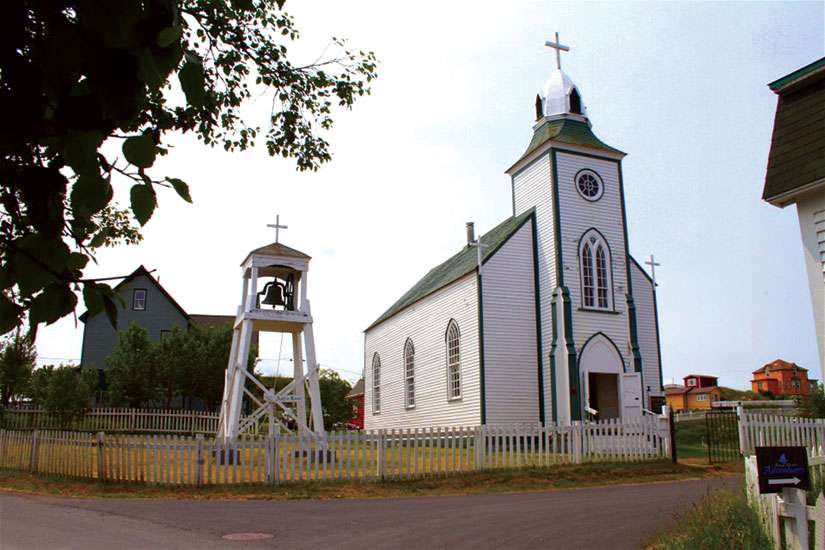Most Holy Trinity, a mission church in the town of Trinity, was built in 1833 when Roman Catholics were granted the right to practice their religion. It has never had lights or plumbing, but it remains active during summer months — and in dire need of repairs after 182 years of faithful service.
Late last year an appeal for donations was placed on a crowdfunding website called thisplacematters.ca. The campaign is supported by the National Trust of Canada, which gives an additional 50 cents for each donation dollar up to $25,000 to campaigns to save designated places of historical significance such as Holy Trinity.
“It’s great that we have been chosen,” said Jim Miller, president of the Trinity Historical Society who submitted the nomination and is overseeing the campaign. “This is a new national online fund-raising initiative to assist with raising funds for select restoration projects across Canada.”
The Royal Bank of Canada, a corporate sponsor of This Place Matters, subsequently stepped forward to bring the matching gift up to a dollar-to-dollar ratio.
Miller hopes to raise $45,000 by spring through the crowdfunding website, which retains about eight per cent for “administrative fees.” This money, combined with $28,000 received from the Heritage Foundation of Newfoundland and Labrador, will fund “the restoration of the Church to its former splendour,” Miller said.
Work will include replacing the rotten clapboard, a fresh coat of paint on the exterior and repairs to the cedar shingle roof. The construction and installation of “traditional wooden windows” is expected to be the most costly component, noted Miller.
This is the second restoration of the church overseen by Miller and the Trinity Historical Society, which also works to preserve and promote a number of historical buildings in the eastern Newfoundland town, about three hours drive from St. John’s.
“We worked with the first restoration of the church in 2005-2006 when it was in major need of some restoration for its roof and tower and some interior and exterior painting,” he said.
The Historical Society’s goal is preservation, not modernization, so those who attend Mass during the summer at Holy Trinity, a mission church run by St. Joseph’s and St. Patrick’s parishes in nearby Bonavista-Port Union, will continue as they always have to do without the luxuries of electricity and indoor plumbing.
“The preservation of this church is important as it’s a large part of the architectural history of the town... and tells an important element of the town’s religious and social history,” said Miller. “The restoration of the church will ensure its structural integrity and therefore its future as a place to be visited and admired by tens of thousands of visitors that come to the historic town of Trinity each year.”
Even though no Catholics live in Trinity, Miller hopes town residents, numbering less than 200, will be inspired “to keep their own properties in pristine shape.”
It is estimated that between 35,000 and 40,000 tourists visit the town each year, although Miller said it is unclear how many of those visit the church specifically.
As of Jan. 11 the campaign had collected more than $11,000 with 171 days remaining in the This Place Matters crowdfunding campaign.


